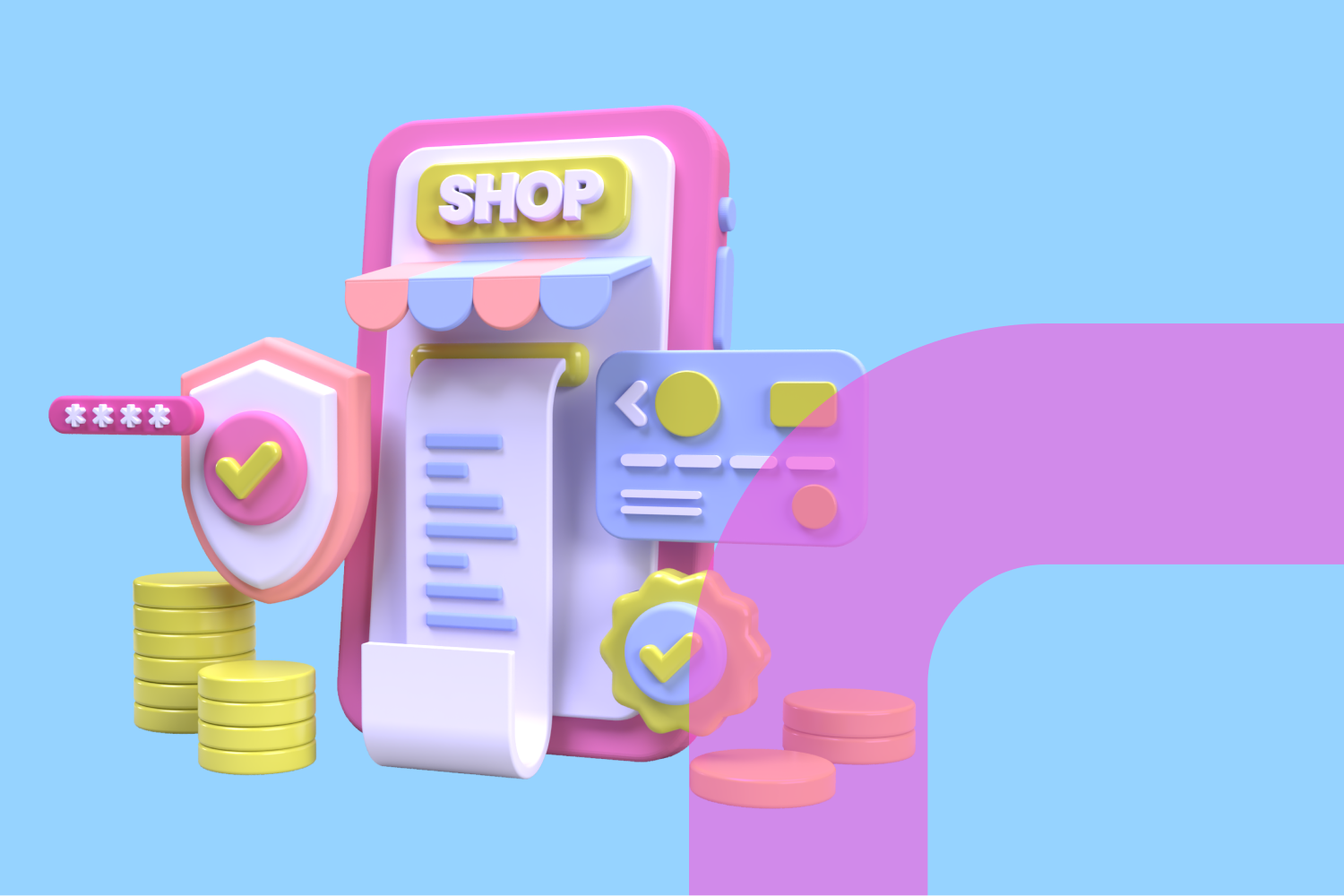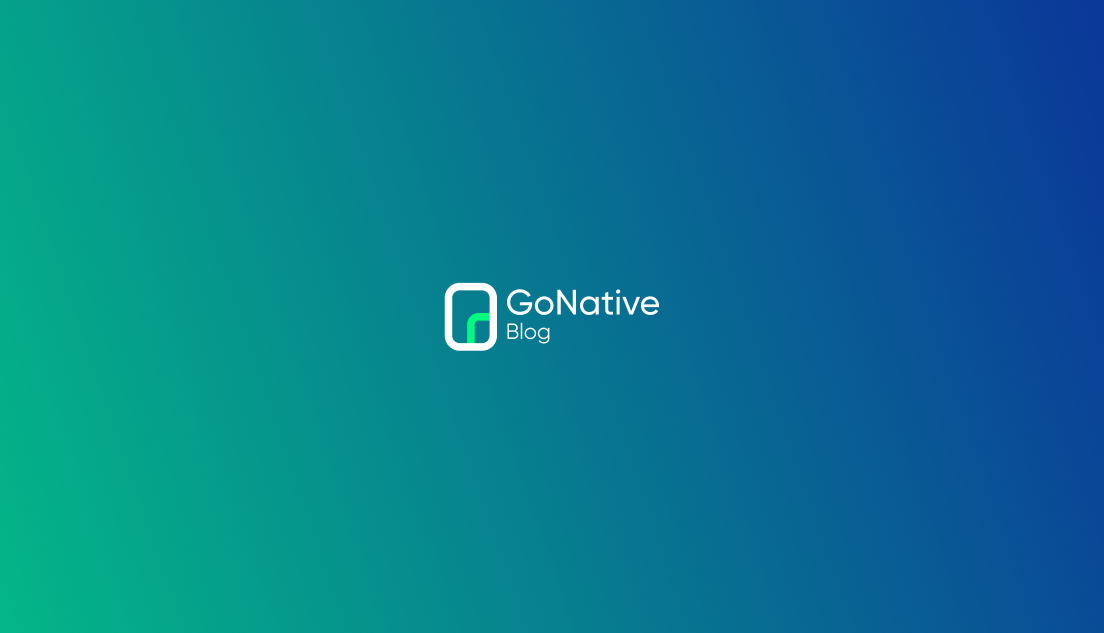TL;DR: A webview app is a native iOS or Android app that incorporates an embedded browser to display web content similar to a mobile web browser like Chrome or Safari. Thus, app content can be created and updated using common web development tools and platforms, rather than requiring specialized native iOS and Android development expertise. Webview apps can include a combination of web content and native content/functionality, and in such cases they are often also referred to as “hybrid apps.”
Our team of experts will answer our most-asked questions about webview apps in deeper detail below, but to save you some scrolling time, here’s the stripped-down Q&A:
1. What’s the difference between a webview app and a website in a browser?
From a UI perspective, a webview app shows web content full-screen, without displaying an address bar or typical website navigation buttons. This seamless display means that — with appropriate design and styling — a webview app can be indistinguishable from a native app for end users.
2. Is a webview app more than a website shown in a browser?
From a functionality perspective, a webview app can include native features not possible in a standard browser. These can range from push notifications to Face ID login to QR code scanning. Often apps that incorporate significant native code are referred to as “hybrid apps.”
3. Can a webview app be published in the Apple App Store and Google Play Store?
Yes! If the app meets all app store requirements — including design and functionality — it will be approved and listed in the app stores for users to download. (More on this later!)
4. How do I build a webview app?
You have a few options: 1. Build one yourself or with an internal development team. 2. Hire an external developer or development agency. 3. Use a basic web-to-app conversion service. Or, 4: Launch a full-feature webview app using this advanced app development platform trusted by brands like McKesson, Whole Foods, Fitbit, and AON.
Need a deeper dive into these webview app FAQs? That’s easy: keep reading.
What’s the difference between a webview app and a website in a browser?
Webview apps include a “native layer” which incorporates native code that runs on the specific iOS or Android device, along with embedded assets such as the app icon and app splash screen. They also include a “web layer” which provides the primary user interface (UI), and most app content and functionality/business logic.
Unlike a standard web browser, a webview app shows web content full-screen, without displaying an address bar or typical website navigation buttons. This seamless display means that, so long as the web content is designed and styled appropriately, a webview app can be indistinguishable from a native app for end users.
Can a webview app be published in the Apple App Store and Google Play Store?
In a word: yes. As long as the app provides an app-like experience, sufficient functionality, and meets all app store review requirements, a webview app can be published to the Apple App Store and Google Play Store.
An app store presence provides credibility, and makes it convenient for your users and customers to download your app to their devices — earning your app a well-deserved place on their home screen. Downloading your app from an app store listing is an elevated experience compared to bookmarking your website and the steps to “Add to Home Screen.”
Side note: What defines an “app-like experience”?
Whether an app is “app-like” is ultimately subjective, and up to the app reviewer to determine, but an app-like experience can be ensured by both the app UI and the app functionality.
While a UI completely implemented in web may be approved, you’ll have a greater chance of success if you employ a combination of native navigation components and web-based components. Native-only functionality, such as native push notifications or QR-code scanning, are app features that are not possible in a website in a browser and, if offered by your app, will help ensure approval.
Popular apps such as The New York Times, The Economist, American Airlines, and Marriott Hotels are examples of webview apps that incorporate native navigation and native functionality.
Webview App Example #1: The New York Times
The New York Times is a good example of an app that displays web content (Figure 1), with additional native features like a Status Bar, a Native Top Navigation Bar, a webview component, and a Native Bottom Tab Bar (labeled 1 to 4 below).
When you navigate into a section of The New York Times app, a Native Top Navigation bar appears with a back button (Figure 2). And when viewing an article, a Contextual Navigation Toolbar is displayed (Figure 3).
Webview App Example #2: United Airlines
The United Airlines app displays web content (Figure 4), with additional native features like a status bar, a Native Top Navigation Bar, a webview component, and a Native Bottom Tab Bar where a user can navigate between flight status, flight booking, and more (labeled 1 to 4 below).
United Airlines includes Auto New Windows, where the flight map opens in a new window in the app, and a back button is visible in the Native Top Navigation Bar (Figure 5).
United Airlines’ flight status opens in a new window with a contextual navigation toolbar featuring back, forward, and refresh buttons (Figure 6).
So, how do I build a webview app?
If you’ve decided on a webview app, there are a few approaches to getting started that you can consider:
1. Build a webview app yourself or with an internal development team.
You may have existing in-house iOS and Android development expertise with capabilities to build a custom webview app from scratch. However, be sure to fully scope your requirements and the associated effort to ensure you are able to manage the large initial upfront effort without needing additional developers or expertise.
Another consideration: How will you maintain and update your app once after the initial launch? Even the smallest change, or addition of a new functionality, could mean extensive redevelopment, not to mention the ongoing effort required to keep your app up to date with future iOS and Android releases that may impact app performance and app store compliance.
Through the cycle of initially launching and then maintaining your app, the development effort and your resource requirements will vary materially.
2. Hire an external developer or development agency to build your webview app.
You may opt to outsource your app to an external developer or a development agency offering iOS and Android developers. They may be able to build your app from scratch based on your requirements; they may be able to repurpose previous work; or they may leverage their own webview app ‘template’ to expedite the development process.
Be aware that external developers and agencies range significantly both in cost and quality, and their timelines may not align with your GTM goals. For instance, while a given developer may be able to quickly build a basic webview app, you may not be able to then rely on them to add complex native features to your app. Similarly, they may not be able to support your app with future updates.
Be sure to provide your complete requirements for your initial launch and beyond, and request an agreement to provide future support and updates.
3. Try a basic web-to-app conversion service.
There are many basic web-to-app conversion websites that you can evaluate to generate simple, basic webview apps without advanced features.
While they may save on time and cost compared to building a webview app from scratch, these apps typically have very limited native functionality, and may not be easy to maintain or update in future (in fact, you may need to build an entirely new app to do so).
If you go this route, know that there are limits to the advanced features and integrations you can add, as well as limits to supporting and updating your app in future.
4. *BEST CHOICE* Build a full-feature webview app using a trusted app development platform.
Leading web developers and companies like FitBit, Whole Foods, McKesson, and AON trust this app development platform to build, publish, and maintain advanced webview apps for iOS and Android mobile devices.. Battle-tested with over a million apps created, technology professionals of all backgrounds opt for this solution versus the headache of trying to build and maintain a webview app from scratch. Why? The benefits are numerous:
- An easy-to-use platform supported by a world-class team takes care of all the heavy lifting to build an app — and it provides exceptional service (if needed) including a guarantee of successful app store approval.
- It’s a far more time- and cost-efficient approach versus any “from scratch” alternative, while still customizable to your specific needs.
- Making future changes and integrating additional native features requires minimal effort.
- Ongoing updates required to support the latest iOS and Android versions are easily deployed (it’s *literally* as simple as pressing a button).
With this approach, you can build a full-feature native app entirely online, leverage your existing (and well-developed) website content, and integrate native plugins that provide users an exceptional app experience — all while saving on time and development costs, and increasing your likelihood of getting approved by app stores (plus many more reasons).
You’ll be able to focus your efforts on your user experience and functionality, and not low-level native app development. As one long-time customer told us, “it’s a ‘no brainer.’”
No, you don’t need to build a webview app from scratch.
Building a full-feature native webview app, powered by your existing website content, is possible. All you need is your URL and this #1 app development platform. Launch a native mobile app to the Apple App Store and Google Play Store in record time that will meet the increasing demand from both iOS and Android users — who will appreciate the rich mobile experience you now offer them.















